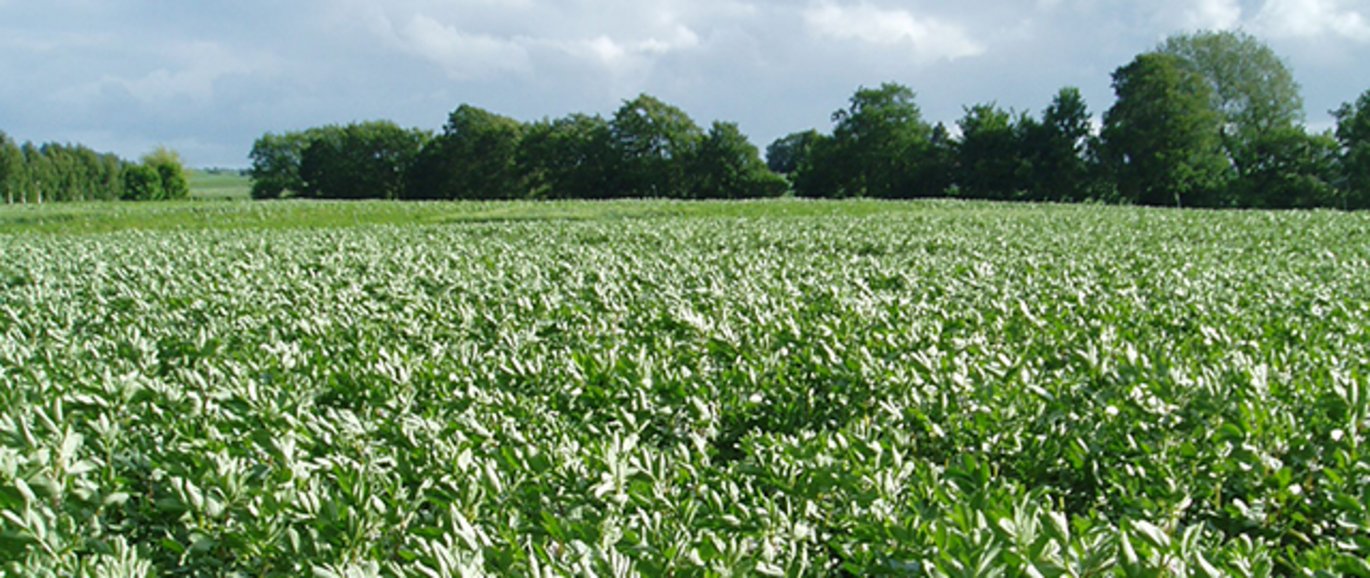New types of faba bean for Danish production of protein
Faba beans have great potential as a protein crop, and researchers will now optimise the cultivation of beans to replace imported soya bean protein with locally produced faba bean protein for animal feed and food ingredients.


Like other EU countries, Denmark imports large amounts of soybean protein from the US and South America to meet the protein demand for food production. Soybean protein is used in large quantities as a feed supplement for animals and is an important ingredient in processed foods.
Researchers from Aarhus University and the University of Copenhagen will now together with Danish plant breeders and researchers from Finland, England and Canada produce new types of beans in Denmark, Northern Europe and North America that will make it economically favourable to produce faba bean protein locally rather than to import soybean protein.
On the basis of existing types, the researchers will develop and apply new ambitious genome-based breeding methods to support the breeding of new types with better yield, content and quality.
In Denmark, a realistic first goal is to cultivate 100,000 hectares of beans, estimated to be worth DKK 1.5 billion. If the production is a success, a new production line that will contribute to economic growth and the creation of new Danish jobs will be established. A local production will also have a positive environmental impact from an improved crop rotation and reduction of CO2 emissions from transport of soybeans.
Professor Jens Stougaard, project manager for the collaboration, states: "The NORDFAB* consortium brings together the leading faba bean expertise in the Northern hemisphere to build the critical mass needed to develop faba bean types by the participating breeding companies can market in northern Europe, the northern United States and Canada."
NORFAB plans that the optimised faba beans should constitute 10% of the cultivated farmland in Northern Europe and on the prairies in the USA / Canada
NORFAB sigter mod, at de optimerede hestebønnesorter skal udgøre 10% af det dyrkede landbrugsjord i Nordeuropa og på prærien i USA/Canada.
The researchers get DKK 27,5 million from the Innovation Foundation to carry out the project.
*NORFAB (NORthern FABa); faba bean.
UN International Year of Pulses
NORFAB (NORthern FABa); faba bean = hestebønne
More information
Professor Jens Stougaard
Department of Molecular Biology and Genetics
Aarhus University, Denmark
stougaard@mb.au.dk – mobile +45 6020 2649
